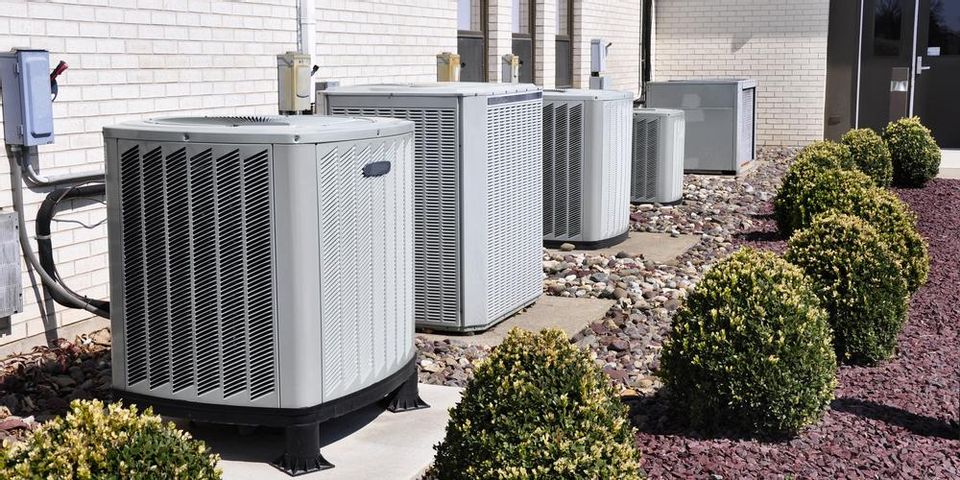Gray Anatomy...Take a look at your Air Conditioner!

Most Americans are familiar with air conditioners, those lackluster gray boxes on the outside of our homes. Few understand how the system components, the anatomy of the cooling system, works. A lot of moving parts, along with some fundamentals of physics, go into keeping you cool on a hot day. Let’s take a look...
4 Important Components of an Air Conditioner System
1. Refrigerant
Refrigerant is a fluid with a low boiling point, which means it easily evaporates, or transforms from liquid to gas. This is the key to any cooling system. When a fluid evaporates, it absorbs heat. That's why perspiration keeps you cool; it removes heat from your skin as it evaporates. The most popular refrigerant right now is R-410. Units with R-22, which is not good for the environment, are no longer in manufacture and should be replaced.
2. Evaporator Coil
 The evaporator coil is located on top (usually) of your furnace and absorbs the heat from your house. The refrigerant passes through the evaporator and turns to gas, thus absorbing some of the heat, removing it from your house, and carrying it outdoors. Warm indoor air will collect on the cold evaporator coil and create condensation. A drain is meant to carry that collected moisture away. Without regular maintenance, the drain gets clogged and you may notice water dripping from your air conditioner, through the furnace (hazard!) or on the floor.
The evaporator coil is located on top (usually) of your furnace and absorbs the heat from your house. The refrigerant passes through the evaporator and turns to gas, thus absorbing some of the heat, removing it from your house, and carrying it outdoors. Warm indoor air will collect on the cold evaporator coil and create condensation. A drain is meant to carry that collected moisture away. Without regular maintenance, the drain gets clogged and you may notice water dripping from your air conditioner, through the furnace (hazard!) or on the floor.
3. Condenser
The condenser is the outdoor unit (aka the gray box!) Refrigerant in gas form enters the condenser, where it turns back into a fluid and releases the heat it collected indoors. A fan on top of the condenser blows across the coils to exhaust the heat being released. You should clean the condenser coils occasionally to prevent grass clippings, mulch, leaves, and other debris from blocking transfer of warm air outside. If the system cannot get rid of the collected heat, it will not cool your house properly.
4. Compressor
The compressor is the engine of the system, located in the condenser. It forces the refrigerant through the series of pipes between the evaporator and condenser, creating a repeating cycle of evaporation, heat absorption, transfer outside, condensation, heat release, and heat exhaust.
Now that you know a little more about the anatomy of your AC, you realize it is important, just like people, to have an annual check up, monitor vital signs and keep the unit in good condition. It’s important so that the unit is ready to take on the heat when you need it!
To schedule an air conditioner installation or home air conditioning repair and maintenance, contact Wright Heating & Cooling, an experienced HVAC firm servicing Portage and Summit counties. They have served homeowners and businesses throughout the Greater Cleveland area for more than 65 years, specializing in both residential and commercial HVAC issues. Visit their website or call (330) 673-3507 to schedule an annual AC checkup.
About the Business
Have a question? Ask the experts!
Send your question

